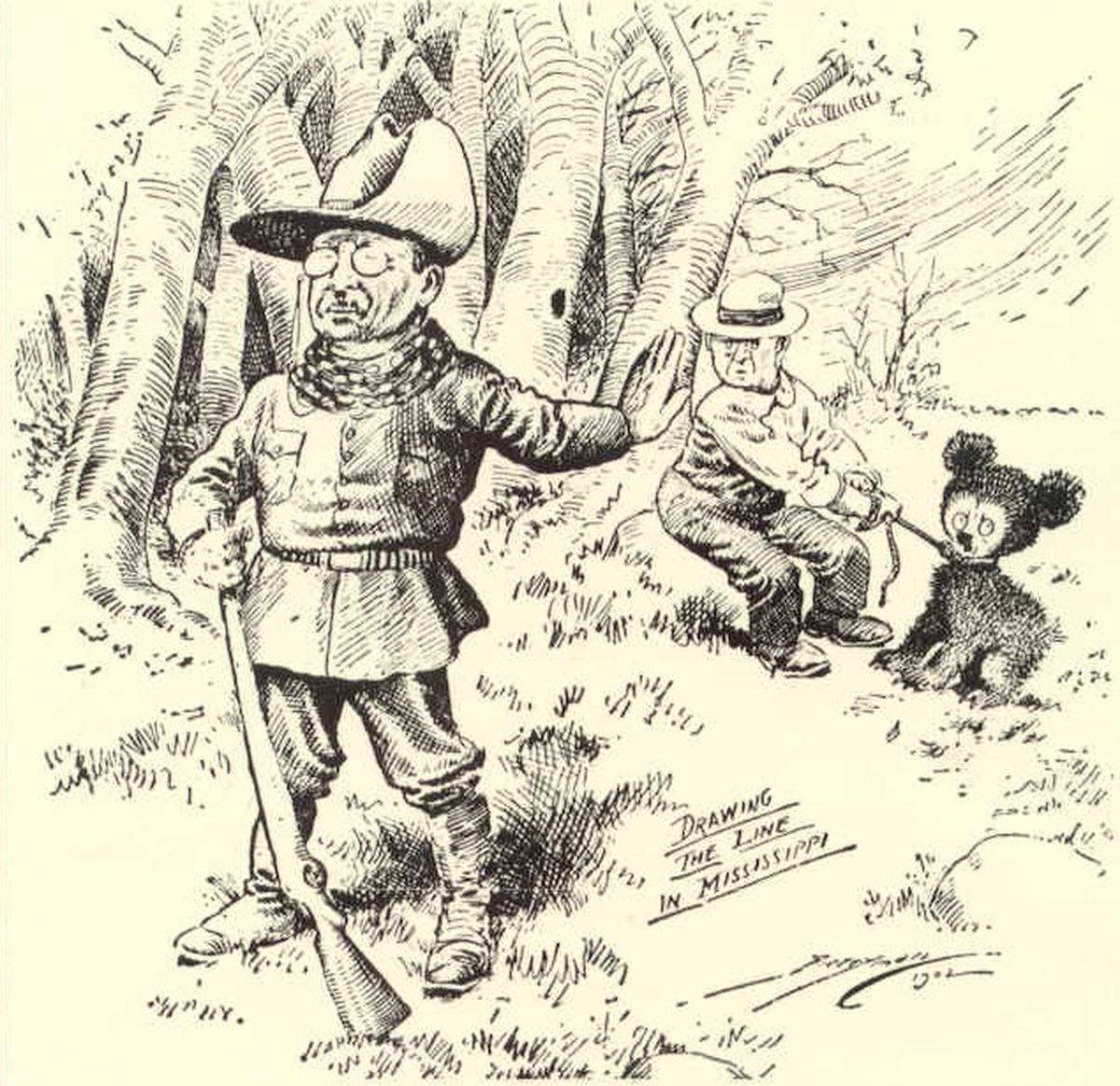
A child with a Teddy Bear | Photo Credit: mathias11/ Freepik
In November 1902, President Theodore Roosevelt embarked on a hunting expedition in Mississippi, with the aim of hunting down a black bear. However, after days of fruitless searching, his companions managed to corner an injured aged bear and tether it to a willow tree. To their surprise, Roosevelt refused to shoot the helpless creature, deeming it unsportsmanlike. This act of mercy was immortalised by cartoonist Clifford K. Berryman in his drawings for The Washington Post, sparking a national sensation. However, the bear in his cartoons bore no resemblance to the original and was cute, wide-eyed and almost childlike.

The political cartoon by Clifford Berryman depicts President Theodore Roosevelt’s bear-hunting trip to Mississippi. It was published in The Washington Post in 1902.
The rise in popularity
Inspired by the incident, a Brooklyn candy store owner named Morris Michtom with the assistance of his wife created a stuffed bear (that resembled Berryman’s drawings) and displayed it in his shop window, labelling it “Teddy’s Bear”, after the former president who was often referred to as Teddy (a nickname that didn’t sit well with him). The toy became an instant sensation, leading Michtom to open the Ideal Novelty and Toy Company, which mass-produced the toy. By 1906 the cuddly toy’s name evolved to ‘Teddy Bear’.
Controversy and criticism
Despite its popularity, the teddy bear faced criticism from some social commentators. They feared that the toy’s appeal, particularly among young girls, would overshadow traditional (human-like) dolls, hamper the development of a nurturing disposition and eventually discourage motherhood, leading to declining birthrates. However, this view was largely dismissed, and the teddy bear continued to capture the hearts of children and adults alike.
A symbol of comfort and resilience
The iconic toy helped launch a whole new market of children’s goods in early 20th Century America when child labour was gradually declining. During both World Wars, teddy bears became symbols of comfort and companionship. Soldiers carried them in their knapsacks, providing a sense of home and solace amid the turmoil of war. The toy’s enduring popularity reflected a shift in society’s view of childhood, embracing a more tolerant and permissive approach that allowed children to remain childlike for longer.
Despite the initial controversies, the teddy bear’s popularity continued to soar, becoming a symbol of comfort, companionship, and childhood innocence. Today, the teddy bear remains a beloved toy, cherished for its role in comforting generations of children and adults.

